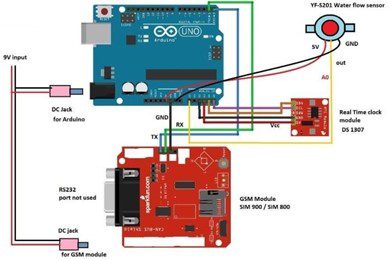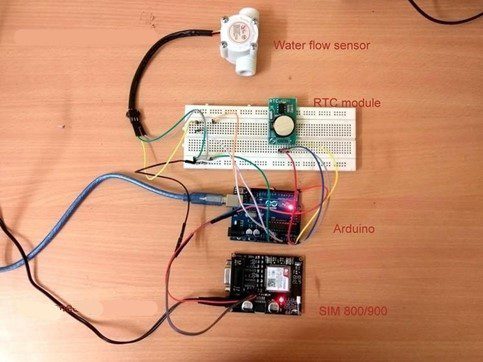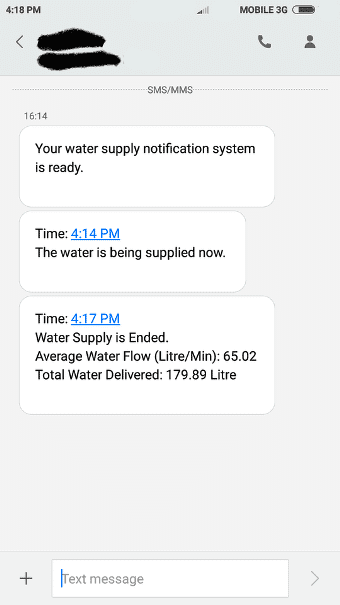Summary
Students will learn how to construct a water Level Indicator/Controller that monitors the level of the overhead tank by constructing a circuit that will notify the user via SMS if the water supply to an area/home is initiated and indicate how high the water has risen when it reaches too high or too low.
Objectives
- Discover how a water indicator works.
- Understanding of the components’ usage and operation
- Putting circuits together and troubleshooting in labs.
Industry-Based Applications
In industries, a water level alert system can alert the user with an alarm if the water level reached is too high or too low; systems can be wired or wireless. They are used in factories such as electrical substations and other liquid storage systems for a variety of purposes such as flood warnings, water well management, and water locating. Smart Cities on the east coast of the United States use Industrial IoT sensors to monitor water levels.
Project Methodology
This group project will monitor the water levels and display the time when the water begins to fill the tank and reach maximum volume. The average water flow rate is measured in liters per minute, and the total amount of water in your tank is measured in liters. The circuit consists of a Hall Effect Water Flow Meter (YF-S201) water flow sensor, an Arduino board that serves as the project’s brain, a Global System for Mobile Communications (GSM module), a SIM 800 or SIM 900 for receiving SMS alerts on water supply, and a real-time clock module for tracking the correct time for water supply initiation and termination. It is recommended to provide the power supply from nine-volt adapters or a well-built homemade transformer-based (LM 7809) supply to power the Arduino board and the GSM module. After a minute of turning on the circuit, you will receive an SMS indicating that the system is ready. When water begins to flow through the sensor, the system will notify the user in real-time. After the water supply is turned off, the system will send another alert outlining the time, average water flow, and total water delivered to your tank. The water must be free flowing at the time of water arrival, which means that if there is any blockage or a closed tap, you will not be notified. Similarly you can build any project using various sensors e.g. Speed Sensor by JAK Electronics.
Components:
- Resistors R1,R4-1K, R2-22k, R3-570 Ohms

- Water flow sensor

- GSM Module

- Real-Time Clock module

- Arduino Uno

- Connecting wires

- Breadboard

Project Procedures:

Step 1: Connect Arduino pin TX to GSM module RX pin with wires.
Step 2: Connect the Arduino pin RX to the GSM module’s TX pin.
Step 3: Connect the Arduino’s GND pin to the GSM module’s GND pin.
Do not attempt to power the GSM module by connecting the Arduino’s 5V output pin to the GSM module’s 5V input.
Step 4: The Real Time Clock (RTC) module will track the time of water arrival and termination.
For this project, a board will be included so that students can assemble the components and see how the wires are connected as well as the relationship between the Arduino and the circuits.
To set the time on the RTC, we must upload the time-setting program to the RTC along with the completed hardware setup. This will synchronize your computer’s time with RTC.
You can download the RTC library file from the Github site, here is the link to download the library file: https://bit.ly/3FdpC7n

SMS Alert screenshot:

For the complete instructions and for Code check this text file: https://duino4projects.com/wp-content/uploads/2022/11/Water-Level-Indicator-SMS-alert-wiht-Sensor.txt







